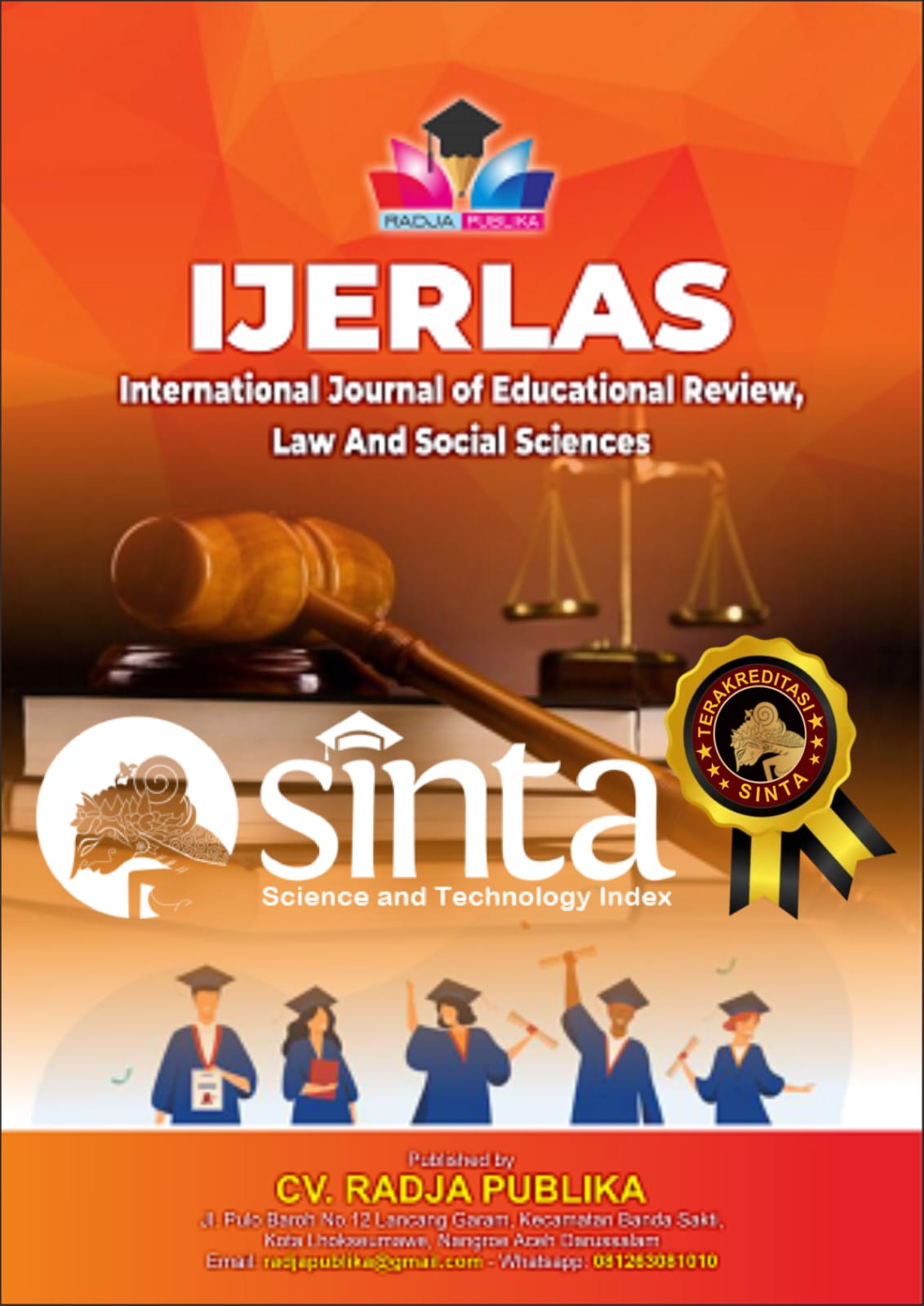COMMUNICATION DYNAMICS IN SOCIAL SKILLS DEVELOPMENT IN CHILDREN WITH AUTISM IN SCHOOL ENVIRONMENTS
Main Article Content
Siti Jubaedah
This study aims to describe the dynamics of communication in the development of social skills in children with autism in an inclusive school environment. The research uses a qualitative approach with a case study type. The study subjects consisted of three children with autism, three companion teachers/classroom teachers, and six peers. Data were collected through participatory observation, in-depth interviews, and documentation, then analyzed using the Miles and Huberman model which included data reduction, data presentation, and conclusion drawn, and validated through triangulation of sources and methods. The results showed that the communication patterns of children with autism were dominated by non-verbal and simple verbal communication with limited initiative. The main barriers to social skills development include difficulty understanding spoken language, a tendency to withdraw from crowded social situations, and a lack of peer understanding of inclusive interactions. However, communication strategies based on visual media, teacher mentoring, peer involvement, and positive reinforcement have proven effective in increasing the frequency of children's social interactions. In conclusion, structured communication dynamics and inclusive school environment support are able to significantly promote the development of social skills of children with autism. These findings confirm the importance of collaboration between teachers, peers, and parents to realize a sustainable socialization process in schools.
Aldred, C., Green, J., & Adams, C. (2004). A new social communication intervention for children with autism: pilot randomised controlled treatment study suggesting effectiveness. Journal of Child Psychology and Psychiatry, 45(8), 1420–1430.
Ardiansah, F. (2024). Komunikasi Instruksional Guru Dengan Siswa Berkebutuhan Khusus. Universitas Komputer Indonesia.
Carter, A. S., Davis, N. O., Klin, A., & Volkmar, F. R. (2005). Social development in autism. Handbook of Autism and Pervasive Developmental Disorders, 1, 312–334.
Cooper, J. O., Heron, T. E., & Heward, W. L. (2007). Applied behavior analysis (Vol. 2). Pearson/Merrill-Prentice Hall Upper Saddle River, NJ.
First, M. B., Clarke, D. E., Yousif, L., Eng, A. M., Gogtay, N., & Appelbaum, P. S. (2023). DSM-5-TR: rationale, process, and overview of changes. Psychiatric Services, 74(8), 869–875.
Ilhami, M. W., Nurfajriani, W. V., Mahendra, A., Sirodj, R. A., & Afgani, M. W. (2024). Penerapan metode studi kasus dalam penelitian kualitatif. Jurnal Ilmiah Wahana Pendidikan, 10(9), 462–469.
Jogiyanto Hartono, M. (2018). Metoda pengumpulan dan teknik analisis data. Penerbit Andi.
Kamps, D. M., Mason, R., & Heitzman-Powell, L. (2017). Peer mediation interventions to improve social and communication skills for children and youth with autism spectrum disorders. In Handbook of social skills and autism spectrum disorder: Assessment, curricula, and intervention (pp. 257–283). Springer.
Marsini, M. (2023a). Analisis Model Pembelajaran Snowball Throwing pada Mata Pelajaran IPS Siswa Kelas I di SDN Ngujung 2. Journal of Education Humaniora and Social Sciences (JEHSS), 6(1), 8–15. https://doi.org/10.34007/jehss.v6i1.1795
Marsini, M. (2023b). Motivasi Belajar Siswa pada Pembelajaran IPS di SDN Kraton VI Maospati. Jurnal Educatio FKIP UNMA, 9(1), 302–309.
Marsini, M. (2023c). Pengaruh Penggunaan Metode Proyek Pada Mata Pelajaran IPS di SDN Ngujung 2 Kabupaten Magetan Terhadap Prestasi Belajar Siswa Kelas IV. Indonesian Journal of Social Science Education (IJSSE), 5(2), 104. https://doi.org/10.29300/ijsse.v5i2.4016
Marsini, M. (2023d). The Effectiveness of the E-Library as a Learning Resource for Elementary School Students’ Social Studies in Improving Literacy Skills. AL-ISHLAH: Jurnal Pendidikan, 15(3), 3726–3736.
Marsini, M., Rukayah, R., & Dahlan, M. (2022). Model Problem Based Learning Dapat Meningkatkan Hasil Belajar SDN 1 Pangkalan Tiga. Pinisi Journal Pendidikan Guru Sekolah Dasar, 2(2), 659. https://doi.org/10.70713/pjp.v2i2.29627
Mesibov, G. B., Shea, V., & Schopler, E. (2005). The TEACCH approach to autism spectrum disorders. Springer Science & Business Media.
Miles, M. B., & Huberman, A. M. (1994). Qualitative Data Analysis: An Expanded Sourcebook, 2nd Edition (2nd ed.). Sage Publications.
Owens, R. E. (2020). Language development. Columbus, OH: Merrill.
Rabbani, M. R. (2024). TERAPI WICARA DALAM PERSPEKTIF KONSELING ISLAMI: MENANGANI HAMBATAN KOMUNIKASI DENGAN PENDEKATAN PSIKOLOGIS. Journal Central Publisher, 2(8), 2393–2405.
Satriani, L. P. A., Asril, N. M., & Setyowahyudi, R. (2024). Pola Komunikasi Antara Orang Tua Dengan Pihak Sekolah Dalam Penyediaan Dukungan Motivasi Diri Pada Anak Autisme. Jurnal Penelitian Dan Pengembangan Sains Dan Humaniora, 8(3).
Schreibman, L., Dawson, G., Stahmer, A. C., Landa, R., Rogers, S. J., McGee, G. G., Kasari, C., Ingersoll, B., Kaiser, A. P., & Bruinsma, Y. (2015). Naturalistic developmental behavioral interventions: Empirically validated treatments for autism spectrum disorder. Journal of Autism and Developmental Disorders, 45(8), 2411–2428.
Suarez, M. A. (2012). Sensory processing in children with autism spectrum disorders and impact on functioning. Pediatric Clinics, 59(1), 203–214.




























